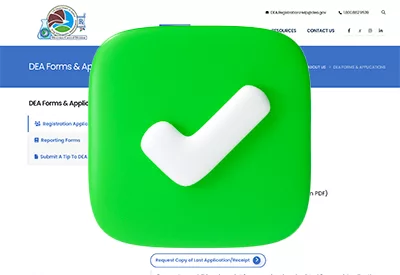Home » Principles of Verbal De-Escalation
Principles of Verbal De-Escalation
January 7, 2022
From The Carlat Hospital Psychiatry Report
Victoria Hendrick, MD.
Editor-in-Chief of the Carlat Hospital Psychiatry Report. Chief, Inpatient Psychiatry, Olive View UCLA Medical Center.
Janet Richmond, MSW. Clinician at VA Boston Healthcare System and McLean Hospital, MA. Associate Clinical Professor of Psychiatry, Tufts University School of Medicine.
Dr. Hendrick and Ms. Richmond have disclosed no relevant financial or other interests in any commercial companies pertaining to this educational activity.
When our patients become agitated and threatening, we often think first about chemical or physical restraints—especially when staff’s physical safety seems at imminent risk. But it’s important to remember that coercive interventions can be humiliating and may lead to more agitation and violence. In fact, research indicates that restraints are correlated with worse patient outcomes, including lengthier hospitalizations (Gopalakrishna G et al, Int J Psychiatry Clin Pract 2015;19(4):238–244). In this article we will review verbal de-escalation techniques that can calm a patient and potentially preclude the need for coercive interventions.
Surprisingly little research exists on the effectiveness of verbal de-escalation methods, and many of the data originate from low-quality studies (Du M et al, Cochrane Database Syst Rev 2017; 4(4):CD009922). One reassuring finding is that we can reduce the use of coercive interventions without increasing the incidence of violent behaviors (Fernández-Costa D et al, J Clin Med 2020;9(9):2791). Our recommendations are based on the consensus guidelines from Project BETA (Best Practices for the Evaluation and Treatment of Agitation), established by the American Association for Emergency Psychiatry.
A fundamental goal in verbal de-escalation is to move away from the concept of “calming the patient,” which implies a dominant/submissive relationship, to the collaborative concept of “helping the patient calm himself” (Richmond JS et al, West J Emerg Med 2012;13(1):17–25).
Here are 10 principles you can use in your efforts to de-escalate agitated patients (Fishkind A, Current Psychiatry 2002;1(4):32–39).
CHPR Verdict: These techniques of verbal de-escalation will help calm at least some of your challenging patients.
Hospital PsychiatrySurprisingly little research exists on the effectiveness of verbal de-escalation methods, and many of the data originate from low-quality studies (Du M et al, Cochrane Database Syst Rev 2017; 4(4):CD009922). One reassuring finding is that we can reduce the use of coercive interventions without increasing the incidence of violent behaviors (Fernández-Costa D et al, J Clin Med 2020;9(9):2791). Our recommendations are based on the consensus guidelines from Project BETA (Best Practices for the Evaluation and Treatment of Agitation), established by the American Association for Emergency Psychiatry.
A fundamental goal in verbal de-escalation is to move away from the concept of “calming the patient,” which implies a dominant/submissive relationship, to the collaborative concept of “helping the patient calm himself” (Richmond JS et al, West J Emerg Med 2012;13(1):17–25).
Here are 10 principles you can use in your efforts to de-escalate agitated patients (Fishkind A, Current Psychiatry 2002;1(4):32–39).
- Respect the patient’s personal space. Stay at a distance of two leg lengths—this keeps you far enough away that the patient will not feel hemmed in and you will be safe from punches or kicks. You and the patient should have room to quickly exit the encounter if either of you feels uncomfortable.
- Don’t be provocative. Remain calm and unruffled. If you cannot, you might need to take a break or ask a colleague to join you or take over. Judicious self-disclosure helps humanize you: “I can’t help you if you’re screaming at me.” “I need help and I’m going to ask Dr. X to join us.” If you threaten to use coercive interventions or say anything that the patient might perceive as humiliating—for example, telling them that you are extending their psychiatric hold without providing a clear explanation—you will only escalate the situation. Watch your body language: Are your arms crossed? Does your voice sound tense? Patients will notice these behaviors. Stand with your arms uncrossed, keep your hands visible—showing you aren’t concealing a weapon—and speak in a relaxed tone. Use friendly eye contact but not so much that the patient feels stared at.
- Establish verbal contact. Introduce yourself and ask the patient’s name. Consider addressing the patient by their last name, as using their first name might appear overly personal or insincere. Let the patient know you are there to help. Identify one staff member to speak to the patient. Whoever engages best with the patient should conduct the de-escalation, even if that person is not the team leader.
- Be concise. Use simple phrases and repeat your message as often as necessary until the patient has heard it. “You seem upset. How can I help you?” and “Let’s work together to get you what you want” are simple and effective phrases.
- Identify wants and feelings. What does the patient want? Reassure them that even if you can’t get them what they want right away, you will work with them to obtain it. Attend to the patient’s real-life needs. Questions like “Is there something I can get for you?” and “Would you like a snack?” show the patient that you are trying to help.
- Listen closely to what the patient is saying. Convey that you are genuinely paying attention. Use echoing statements like “So what I think you’re saying is…” Do not argue with the patient, even if they insult you or use profanities or slurs. Tell the patient that you understand they are frustrated, but that the unit does not tolerate rude and inappropriate comments.
- Agree to disagree. Find things you can agree on. For example, if the patient says, “The staff mistreats me,” you can agree in principle by saying, “I believe everyone should be treated respectfully.’’ Explore why patients feel a certain way. If they believe staff are ignoring them, acknowledge this by saying something like, “Sometimes we get really busy and don’t have as much time as we’d like for each patient, but I promise that we will never deliberately ignore you.” If the patient tells you that they are angry because the government installed a chip in their brain, you can agree that no one should have things done to their body against their will. If there is no way to honestly agree with the patient, agree to disagree. We find it helpful to say, “You have a right to disagree with me, and I respect that, but I need to do what I think is best for you while you’re under my care.”
- Lay down the law and set clear limits. Provide clear information about acceptable behaviors and inform the patient of both the positive and negative consequences, depending on their choices. Tell the patient that it is unacceptable to inflict self-injury or to injure others. We say, “Our job is to keep you and everyone else safe, and we need to take whatever steps are necessary for that. We don’t want you to be placed in restraints, but that might need to happen if it’s the only way to keep everyone safe.” Communicate this in a matter-of-fact way and not as a threat. Have security on standby if there is any question as to whether the patient can contain their anger. It can be helpful to say, “Our hospital policy requires us to call security when there’s a big disagreement between patients and staff” so that the patient won’t see the call to security as a personal affront.
- Offer choices and optimism. Offer things that will show the patient you are trying to help, such as a cup of water, a blanket, or access to a phone. If a time-out or a medication might be helpful, give the patient a choice, and if they choose medication, give them options: eg, “Do you want the pill form or a shot?” Express optimism and let the patient know that things will get better. If the patient doesn’t want to take medication, tell them, “I realize you don’t think this medication will help you, but I’ve seen a lot of people who’ve come in for similar reasons as you, and they’ve gotten better with it.” If the patient states they want to get out of the hospital, give them clear goals—eg, appropriate impulse control and adherence to treatment—and assure them that, if they reach those goals, they will be discharged.
- Debrief the patient and staff. Sometimes, despite every effort to de-escalate, patients will end up receiving intramuscular medications or being placed in seclusion or restraints. Following an involuntary intervention, work to restore the therapeutic relationship. Explain why the intervention was necessary and let the patient explain events from their perspective. Help the patient think of more appropriate ways to express anger. Give the staff an opportunity to suggest what went well during the episode and what did not.
CHPR Verdict: These techniques of verbal de-escalation will help calm at least some of your challenging patients.
Issue Date: January 7, 2022
Table Of Contents
Recommended
Newsletters
Please see our Terms and Conditions, Privacy Policy, Subscription Agreement, Use of Cookies, and Hardware/Software Requirements to view our website.
© 2025 Carlat Publishing, LLC and Affiliates, All Rights Reserved.


_-The-Breakthrough-Antipsychotic-That-Could-Change-Everything.webp?t=1729528747)



